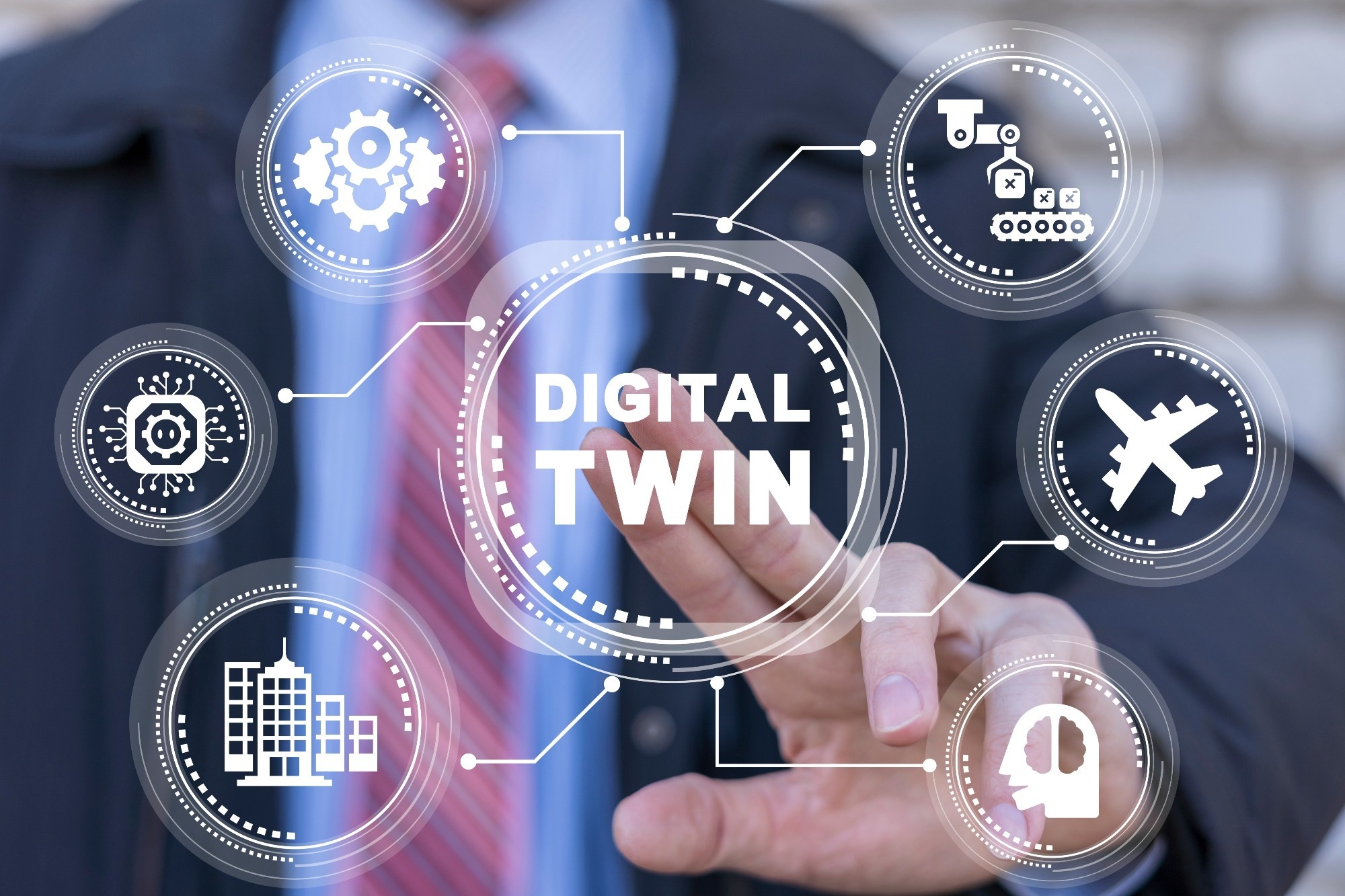 By Nidhi DhullReviewed by Susha Cheriyedath, M.Sc.Nov 21 2024
By Nidhi DhullReviewed by Susha Cheriyedath, M.Sc.Nov 21 2024A recent review article published in Buildings explored the integration of digital twins (DTs) and sustainability through a scientometric analysis and thematic review of 235 papers sourced from the Scopus database between 2017 and 2024.
Of these, 34 highly cited journal and conference papers were selected and categorized based on their focus areas, including simulation, technology integration, and smart systems.
 Study: Digital Twins in the Sustainable Construction Industry. Image Credit: Panchenko Vladimir/Shutterstock.com
Study: Digital Twins in the Sustainable Construction Industry. Image Credit: Panchenko Vladimir/Shutterstock.com
DTs for Simulation
DTs have emerged as promising tools for lifecycle management and urban development due to simulations that provide insights into current conditions and future projections. DTs help stakeholders improve long-term maintenance and operational prioritization through access to real-time data.
Considering urban management, DTs can improve city planning and infrastructure management. For example, using DTs to simulate networks of transport means, such as railways and bridges, can enable more sustainable decision-making. Notably, virtual sustainable cities are being explored in Metaverse, possessing great potential to enhance social interactions, governance, and climate change mitigation efforts.
However, despite the significant potential, DTs are applied largely in silos, focusing on specific domains without addressing broader, cross-functional opportunities. For instance, DT models incorporating cost, scheduling, and carbon emission metrics can improve the sustainability and resilience of existing infrastructure. However, the discussion on the standardization and scaling of these methods for widespread adoption in diverse infrastructure contexts is limited.
Technology Integration
Integrating various technologies with building information modeling (BIM) and DTs can considerably enhance decision-making and predictive maintenance efficiency. For instance, incorporating BIM with Internet-of-Things (IoT), building management systems, and asset tagging programs yields dynamic DT systems that enhance asset tracking for predictive maintenance.
Integrating such technologies can also contribute to circularity and sustainability in the built environment. For example, material passports and BIM are crucial technologies promoting circular construction, while DTs provide critical support. However, practically implementing these systems on a large scale is challenging, mainly due to non-standardized workflows and data-sharing protocols across projects.
Another considerable application of DTs lies in modular construction. For example, a DT-enabled smart modular integrated construction system (DT-SMiCS) combines DTs with radio frequency identification (RFID) and ultra-wideband (UWB) devices for real-time, multi-dimensional data collection. However, further efforts are required to generalize such systems into different construction types and materials.
Digital technologies are transformative to achieve sustainability goals. A framework combining BIM, IoT, and artificial intelligence can measure and predict carbon emissions in existing buildings, enabling net-zero renovations.
Additionally, DTs can help overcome hurdles to integrating BIM with sustainability targets. However, this requires making the digital systems accessible to smaller construction companies with limited technological infrastructure.
Smart Systems
DTs have evolved into smart systems with advanced decision-making capabilities, autonomously managing operations and responding to real-time changes. Integrating DTs into different industries can enhance transparency, efficiency, and real-time monitoring. Consequently, the projects’ reliability and persistence improve.
BIM-IoT integration in road construction projects provides a platform to create a DT of road prototypes, enabling precise monitoring throughout the construction process and promoting sustainability. However, such integration needs significant resources and expertise, hindering widespread adoption in the construction industry. The organization’s cultural readiness also remains an obstacle.
DT integration has also benefitted smart energy cities. AI-based digital platforms help optimize energy consumption across interconnected objects in urban landscapes. While this improves energy efficiency, managing large-scale urban systems is complex and requires technological expertise.
A DT-BIM-IoT-data mining framework allows for advanced project management, enabling a seamless flow of information, improved understanding, and predictive optimization of construction processes. Simultaneously, a BIM-RFID integration framework improves risk management and helps maintain completion schedules.
DTs enable testing assumptions before actual construction using virtual construction. Integrating DTs with augmented reality assists project teams in visualizing construction details in real-time and facilitates automated design reviews. Additionally, combining DTs with RFID technology enhances safety by providing real-time location data for workers and alerts to potential hazards.
Conclusion and Future Prospects
Overall, the researchers conducted a comprehensive literature review to highlight the effectiveness of DT in areas such as smart construction, building and infrastructure, and urban management. Additionally, the researchers identified potential future research areas Based on the current application status and challenges.
DTs can be used for structural health monitoring, accurately predicting structural conditions and inspections by integrating advanced technologies like IoT, virtual reality, unmanned aerial vehicles, and machine learning. Moreover, apart from energy efficiency applications, DTs can enable efficient water consumption, which requires further research.
Health, safety, and environmental considerations for underground projects present great application opportunities for DTs. Such projects involve tunnels and deep excavations, prone to significant risks from unpredictable events.
Developing DTs integrated with IoT, cloud computing, and wearable sensors can enhance hazard prediction and recognition and improve communication between office teams and on-site workers. Additionally, these technologies enable more effective evacuation and crisis management. Conclusively, enhanced construction sustainability is achievable through further research on applying DTs in circular construction.
Journal Reference
Zahedi, F., Alavi, H., Sardroud, J. M., & Dang, H. (2024). Digital Twins in the Sustainable Construction Industry. Buildings, 14(11), 3613. DOI: 10.3390/buildings14113613, https://www.mdpi.com/2075-5309/14/11/3613
Disclaimer: The views expressed here are those of the author expressed in their private capacity and do not necessarily represent the views of AZoM.com Limited T/A AZoNetwork the owner and operator of this website. This disclaimer forms part of the Terms and conditions of use of this website.